

Andrew Maclean
2025 Mahindra XUV 3X0 vs Chery Tiggo 4: Spec battle
25 Days Ago
Toyota's C-HR still delivers the high-riding coupe looks its acronymic name promises, and in petrol-electric hybrid form is a real fuel sipper. But there are cheaper and more practical options.
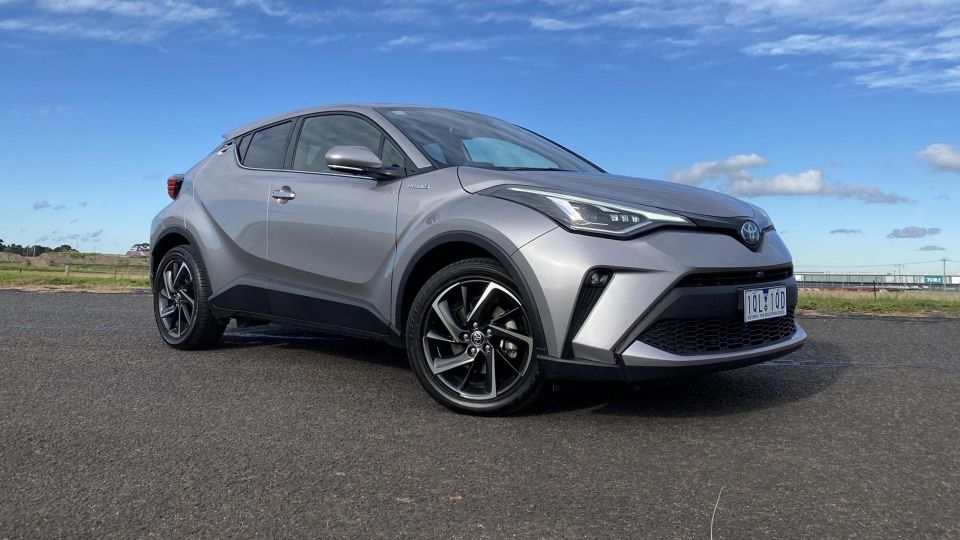
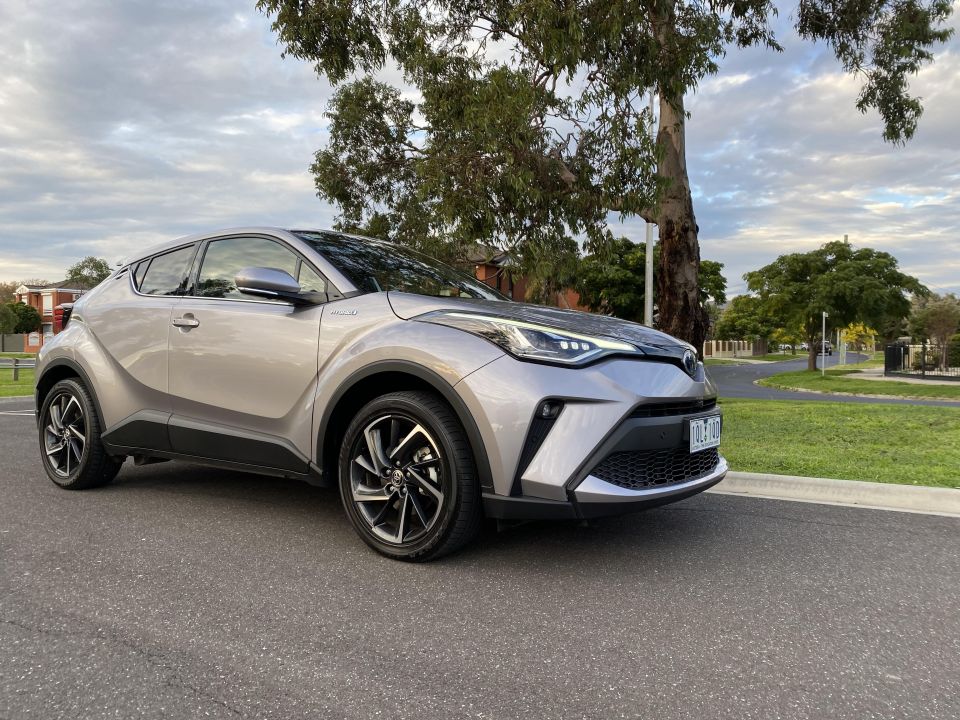

Senior Contributor
New from
$26,990
excl. on-roads

Senior Contributor
New from
$26,990
excl. on-roads


Senior Contributor
New from
$26,990
excl. on-roads

Senior Contributor
New from
$26,990
excl. on-roads
Quickly see how this car stacks up against its competition. Select any benchmark to see more details.
Where expert car reviews meet expert car buying – CarExpert gives you trusted advice, personalised service and real savings on your next new car.
Toyota is enjoying spectacular sales growth from its petrol-sipping hybrid cars in Australia, with core models such as the RAV4 and Corolla leading the charge.
The aggressively-styled Toyota C-HR small crossover picked up its own electrified drivetrain in October last year, headlining a range of updates.
While not the performance upgrade that the bold styling hints at, it significantly reduces fuel use and CO2 emissions, not to mention driving refinement around town.
It’s not particularly cheap, this C-HR hybrid. That’s because it’s only available in top-of-the-range ‘Koba’ specification.

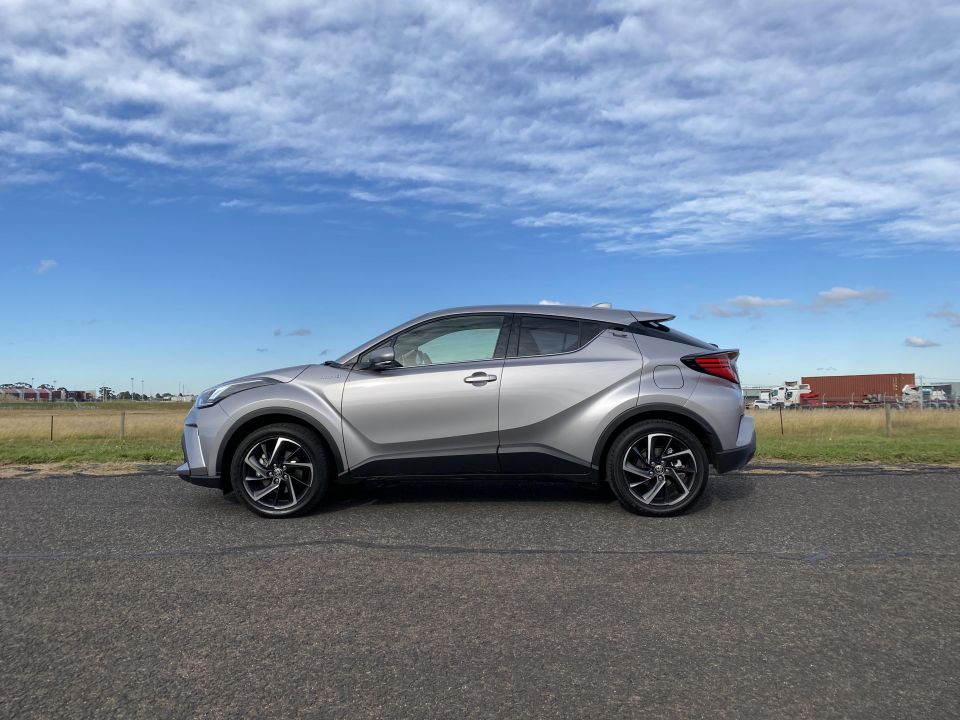
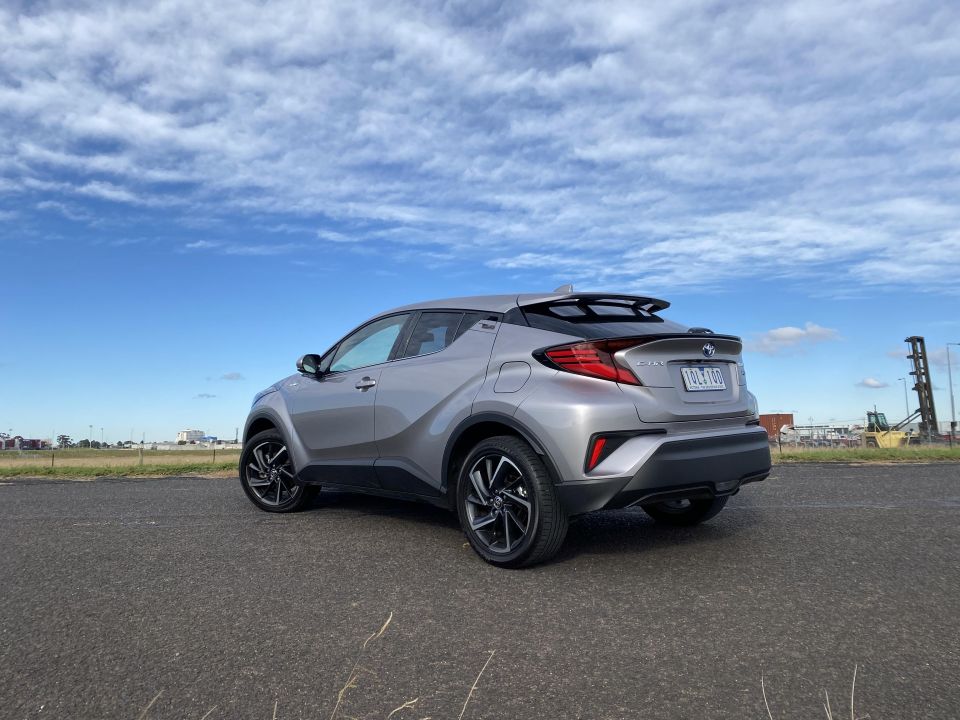
Toyota demands a list price of $36,440 before on-road costs, equating to a drive-away price of about $40,700 unless you can wrangle a discount.
It wears a $2500 premium over the non-hybrid model. It’s also about $3000 more expensive than the most expensive Corolla hybrid model, the ZR hatchback, which shares the same engine and platform.
Perhaps more importantly, it’s priced in line with a larger RAV4 hybrid in base GX guise, which is infinitely more practical but less luxurious.
In fairness, the only other hybrid in the class is Subaru’s XV, which costs $35,580 before on-roads. You’re also paying similar money for a top of the range Mazda CX-3 or Hyundai Kona. Small SUVs aren’t cheap in general.
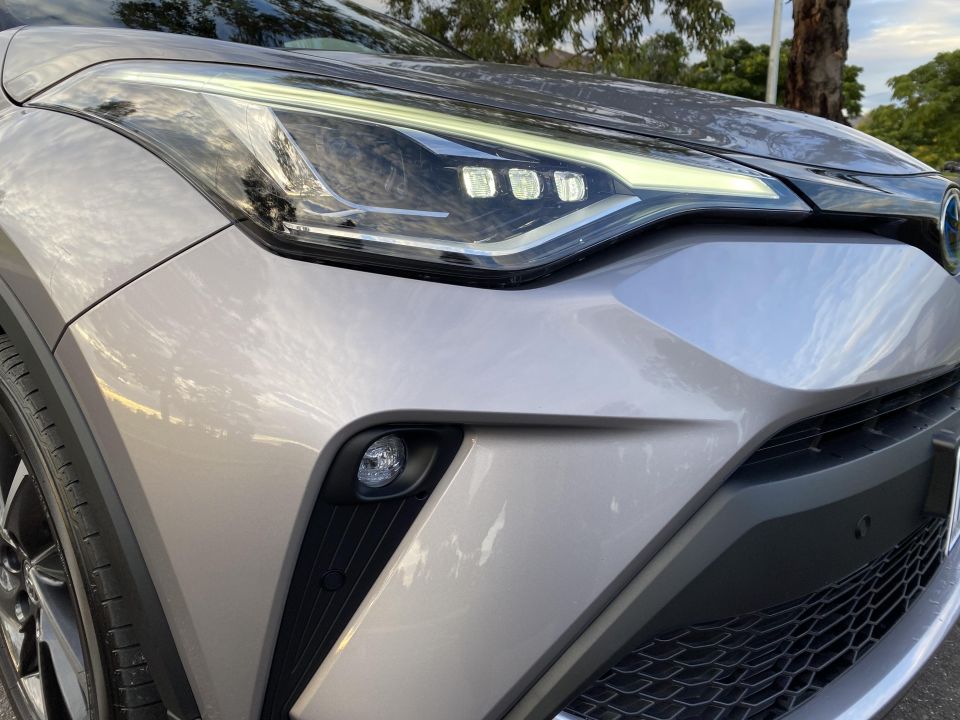
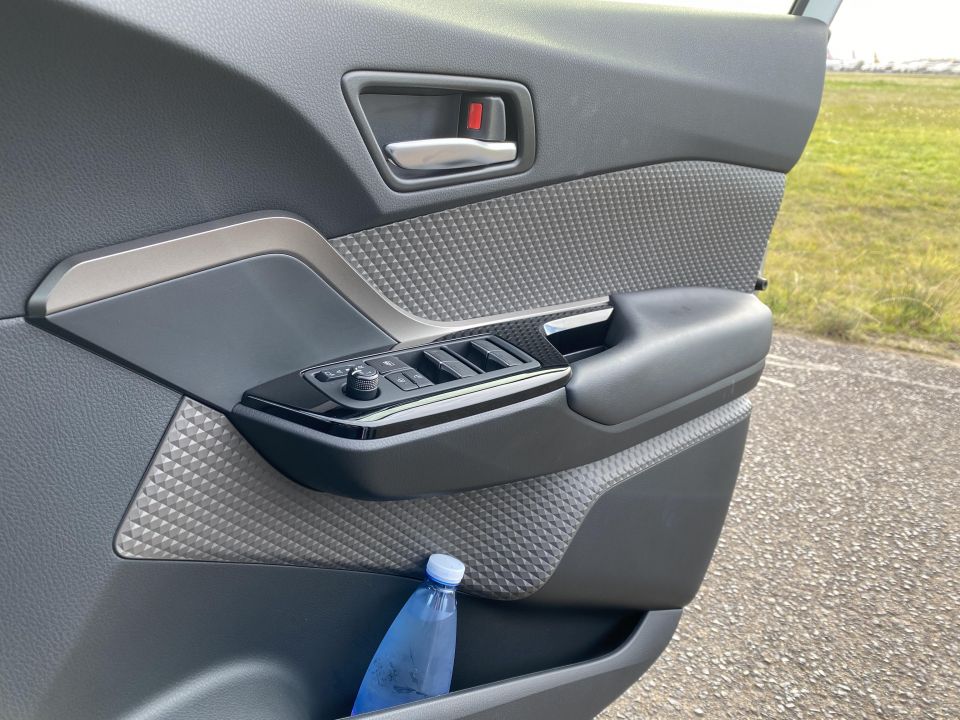
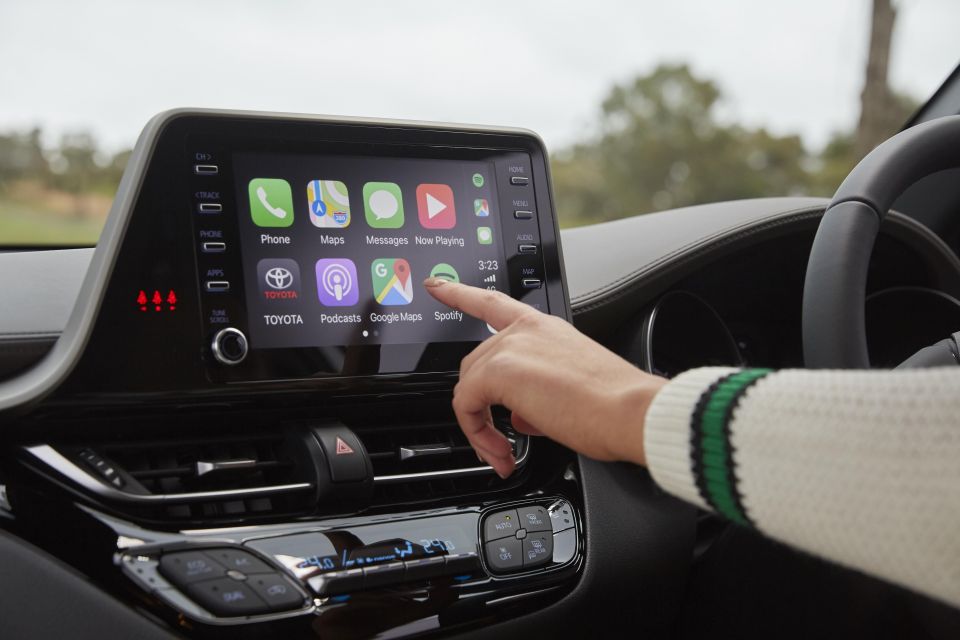
There are a vast array of small SUVs worth considering at this price point, including the well-rounded Kia Seltos Sport+, upmarket Mazda CX-30 G25 Touring, and the Subaru XV Hybrid L – the only other hybrid in the segment.
All C-HRs get alloy wheels, dual-zone climate control, LED daytime running lights and fog lights, heated side mirrors, rain-sensing wipers, an 8.0-inch touchscreen with satellite navigation, Apple CarPlay, and Android Auto, six speakers, and one-touch power windows.
The Koba spec adds 18-inch wheels (in place of 17s), LED headlights with auto high-beam, privacy glass, a proximity key with push-button start, a surround-view camera, leather-accented seat trim with heating for front occupants, powered lumbar adjustment for the driver, and a Nanoe filter for the AC unit.
It should be. Crash tester ANCAP awarded the C-HR five stars in 2017 (87 per cent for adult occupant protection, 77 per cent for children, 65 per cent for pedestrian protection, and 68 per cent for safety assist) and carried this over to the hybrid version when it launched.
You get seven airbags, and rear ISOFIX child seat anchors and top tethers.


Driver-assistance tech includes pre-collision alert and autonomous emergency braking that detects pedestrians, lane-departure alert, blind-spot monitoring, rear cross-traffic alert (handy, given the blind spots this car’s design yield), and parking sensors at both ends.
“Tests of this [AEB] system at highway speeds showed good performance, with collisions avoided or mitigated in all test scenarios,” ANCAP said in its report.
It’s worth noting ANCAP gave the C-HR 0/3 for Speed Assistance and thereby hurt its overall score, yet it has all-speed active cruise control fitted as standard.
One thing we’d like to see is the Corolla’s Lane Trace Control system that works to keep the car centred on highways through steering intervention.
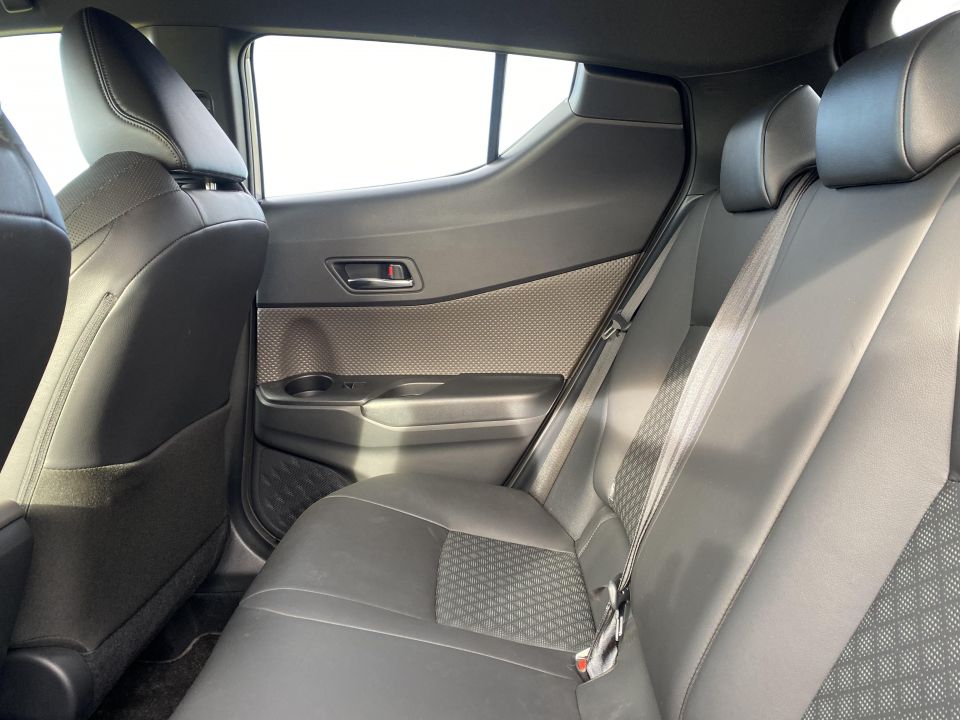
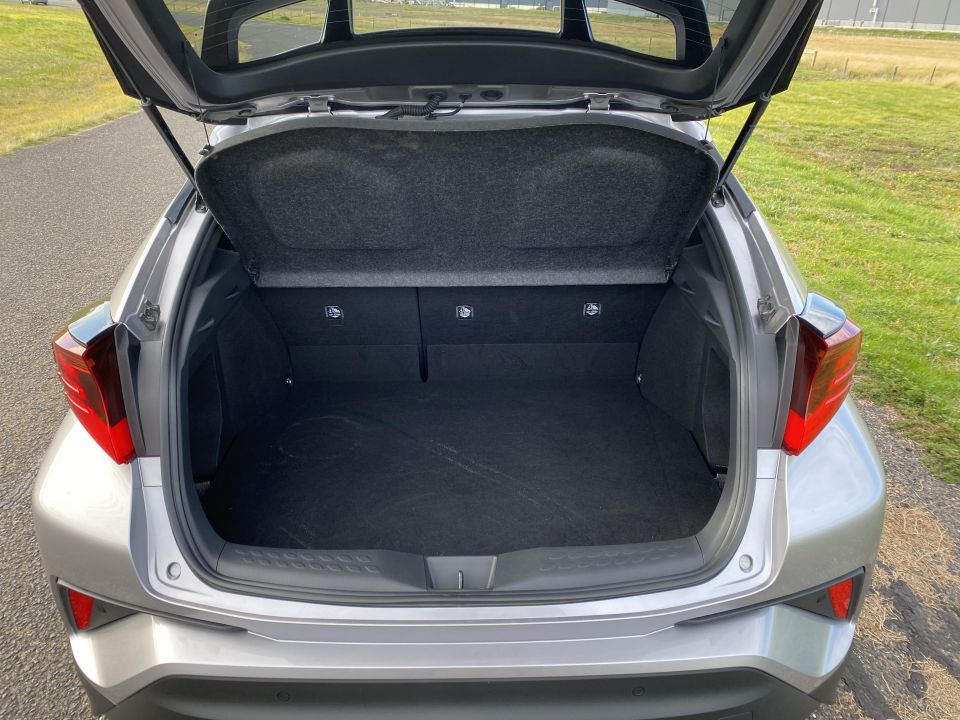
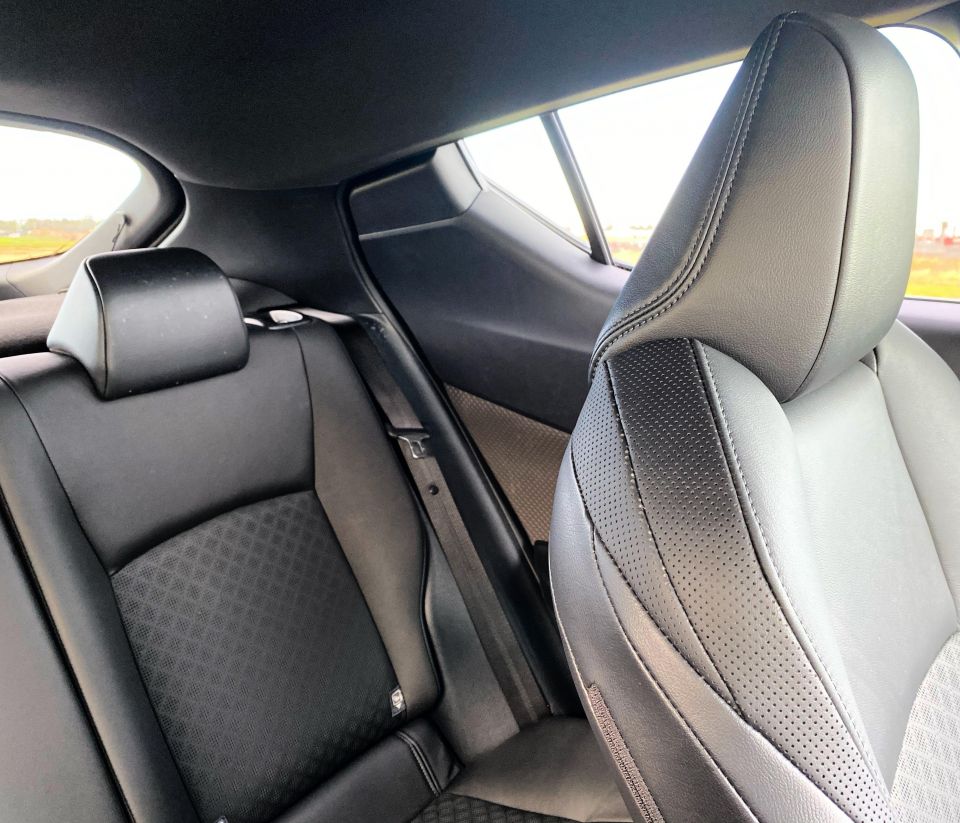
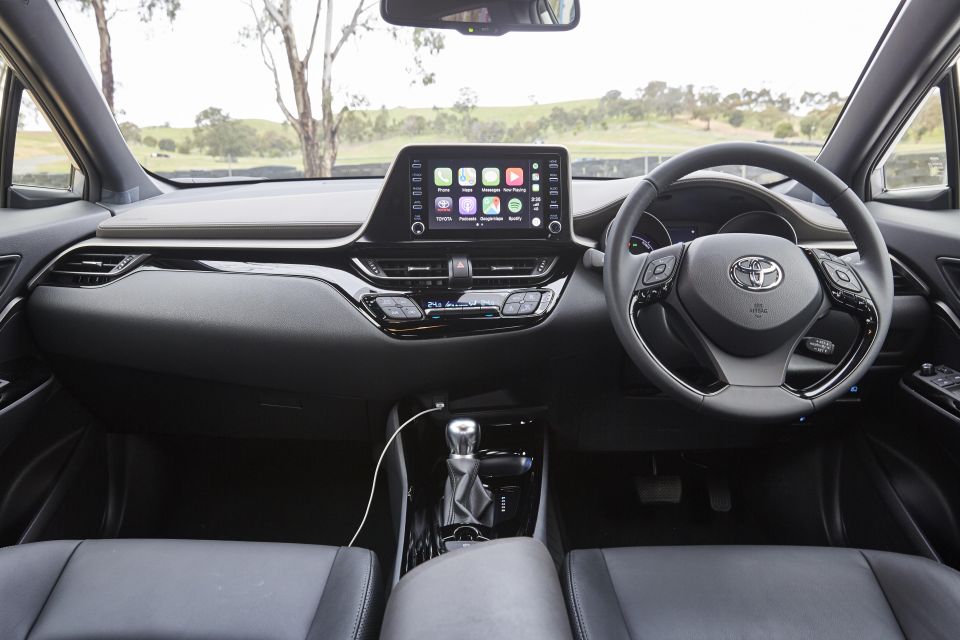
Quite nice, actually. The funky design goes well with the exterior, and the padded touch points are offset by design quirks such as blue backlighting, diamond-pattern door trims, and roof scalloping above the passenger’s head.
The buttoned steering wheel and seats have plenty of adjustment to get you ergonomically settled, and the driver’s instruments flank a small TFT screen with digital speedo and hybrid drivetrain graphic.
The lack of a head-up display is a shame, though – the Corolla ZR has one after all.
The new centre touchscreen faces the driver and is simple enough to interface with. It’s far slicker and more modern that what the C-HR launched with, and the presence of hard buttons and knobs alongside screen controls make things user-friendly.
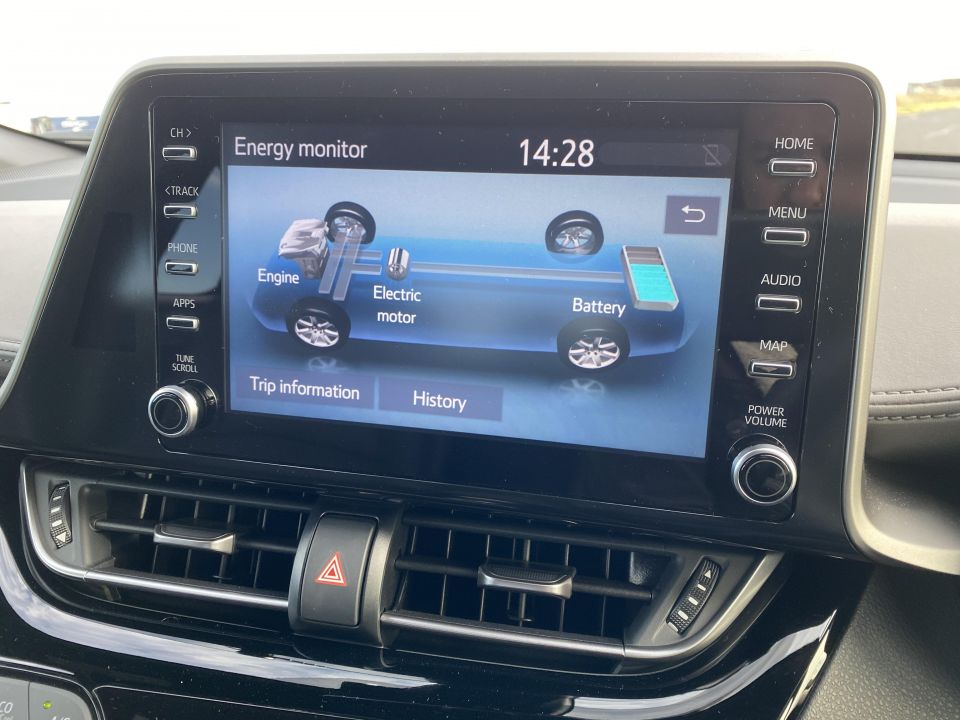
Storage space isn’t especially great: the centre console is small, though the door bins can happily swallow a bottle. There’s a single cupholder ahead of the driver and a small glovebox too.
One thing we’d like to see is a flat tray with a Qi wireless phone charger, like the Corolla and RAV4 offer.
As the swoopy roof suggests, headroom isn’t brilliant for anyone north of 190cm, and which reinforces Toyota’s wise decision not to make a space-cutting sunroof standard. If you want a driving position that feels like a coupe, only with a slightly higher road view, then this is what you’re after.
Outboard visibility isn’t great, since those raked side windows, the small tailgate glass, and the large c-pillars combine to create some significant blind spots.
The wide-view camera and blind-spot monitoring lights help, but it’s still a hassle to see out at intersections or when reversing into/out of a parking bay.
Back seat occupants get the same funky door inlays and nice leather-trimmed seats and have cupholders in each door armrest. The headroom and legroom is surprisingly good once you’re settled in, too.
The issue is the claustrophobic feel, a product of small windows and big pillars. It’s not an especially nice place to be for long trips, compared to small SUVs like a Honda HR-V or Kia Seltos. There are also no dedicated air vents.
The back seats fold down 60:40, to expand on the fairly tight 318-litre boot – bigger than a Mazda CX-3, but fair bit smaller than the two competitors mentioned above, or a Nissan Qashqai.
At least the hybrid battery does not necessitate any reduction to the cargo space, and there’s a temporary spare wheel under the floor instead of a repair kit.
| Toyota C-HR | Corolla hatch | |
|---|---|---|
| Length | 4390mm | 4375mm |
| Width | 1795mm | 1790mm |
| Height | 1565mm | 1435mm |
| Wheelbase | 2640mm | 2640mm |
| Clearance | 137mm | 135mm |
| Boot space | 318L | 217L |
| Weight | 1460kg | 1400kg |
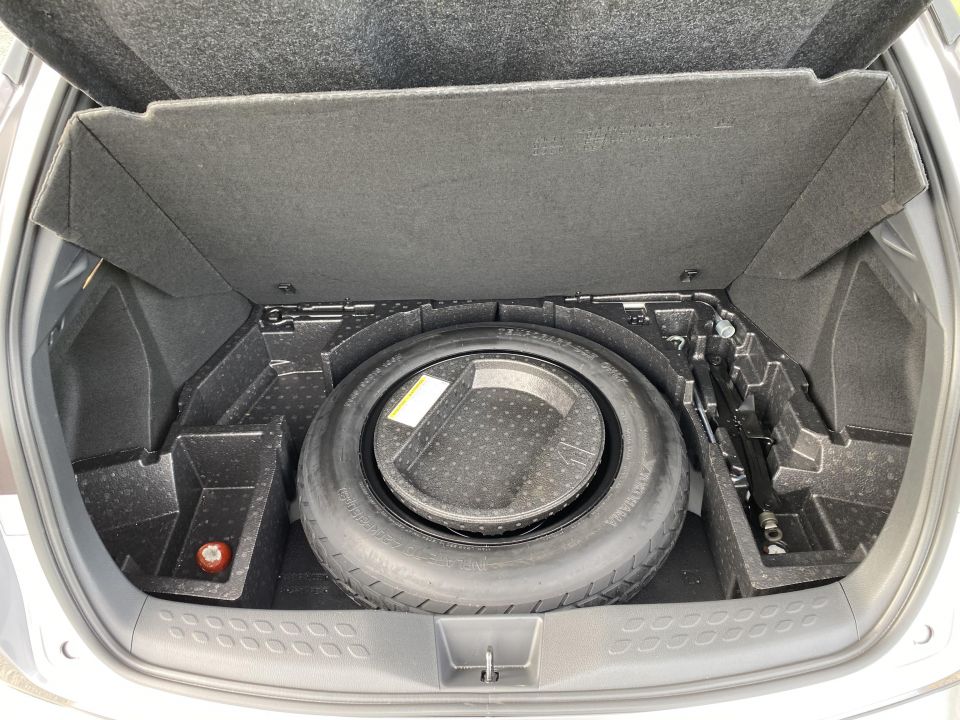
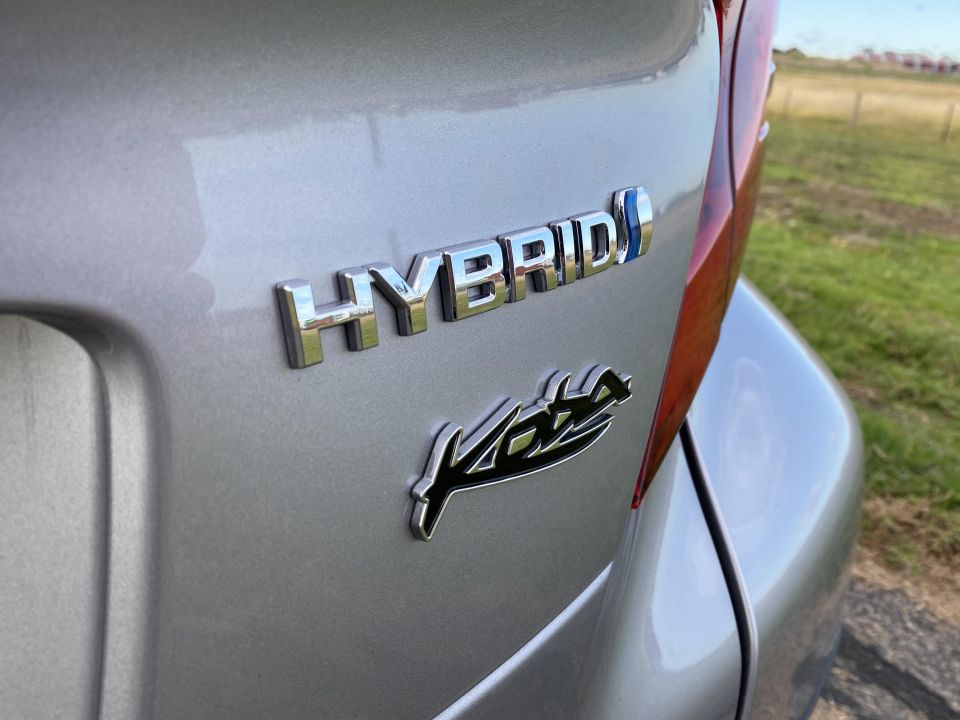

The drivetrain pairs a 1.8-litre petrol engine with a small battery pack and 53kW/163Nm electric drive motor.
Power is sent to the front wheels (there is no all-wheel drive option) through an e-CVT transmission with seven programmed stepped ratios.
Combined power output is 90kW because the engine and motor never offer their peak outputs simultaneously. This car is about efficiency first and foremost.
The 0-100km/h sprint takes a smidgen under 11 seconds, about the same as the 85kW 1.2-litre turbo-petrol option.
While the 1.2 petrol C-HR requires 95 RON premium petrol and averages 6.4 litres per 100km consumption on the combined cycle, the hybrid manages fine with 91 RON and cuts fuel use to just 4.3L/100km.
It’s not rated to tow anything, if that interests you.
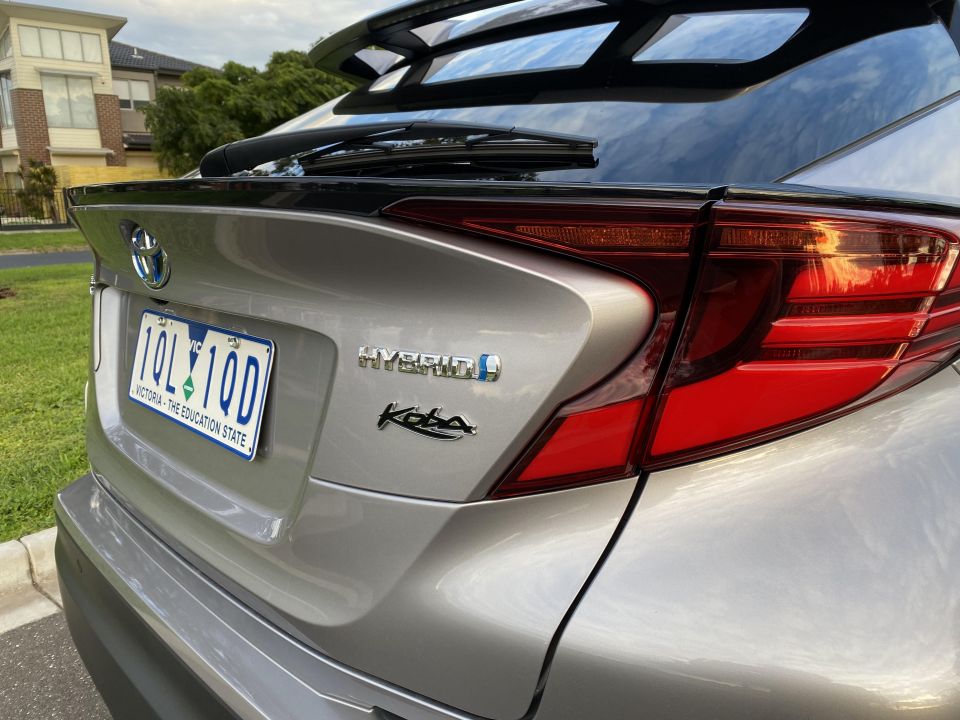

The hybrid driving experience is geared to urban commuting, which makes the city-slicker C-HR a sure bet.
The electric motor is most useful for getting the C-HR off the line, meaning it’s mostly silent at ‘idle’ and departs smoothly and without a sound. The engine then jumps in once you’re rolling, with commendable smoothness.
The only time refinement suffers is on cold starts, when the engine revs quite loudly for a short window of time. The response up to 50km/h is quite snappy, but forward momentum is leisurely from there.
If you lift off the throttle down hills, the engine will usually decouple, and the battery will swiftly recharge itself by harnessing braking energy captured by the reversed electric motor. You can watch all this via a nifty animation available either on the centre screen or driver instruments.

I averaged 4.5L/100km on a combined cycle, and got as low as 3.8L/100km when trying really hard to save fuel – driving carefully, in other words.
While the hybrid is a smoother driving experience for the most part, number crunchers note it’ll save you 2.1 litres every 100km over the petrol-only model. At the current $1 per litre, it’d take you well over 100,000km to recoup the $2500 premium.
Of course fuel might get pricier, or you might just want to do your part.
Despite a small weight impost, the C-HR drives as well as the 1.2. The ride quality is excellent, with plenty of isolation over sharp hits and bumps.
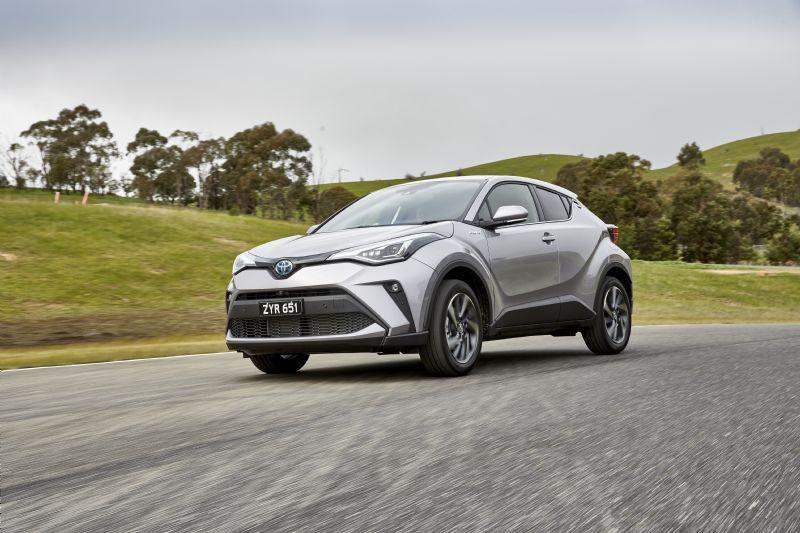
The body settles quickly thanks to well-tuned springs and dampers, and the body control through corners is suitably car-like. Let’s be honest, with a running clearance of 137mm, this is just a hatchback.
The steering is vague in feel, but consistent, and the light action makes it easy to twirl around in car parks and the like.
Toyota Australia offers a five-year, unlimited-kilometre warranty and the biggest dealer network in the country.

Servicing is also very cheap, which offsets the purchase cost somewhat. The first four services – at intervals of 12 months or 15,000km – are just $200 apiece.
The Toyota C-HR is very much a style purchase. It has no great practicality advantage over a Corolla despite costing more, nor do its sporty looks translate to snappy performance.
The hybrid version is not as accessible as it could be, since you can only get it in Koba grade.
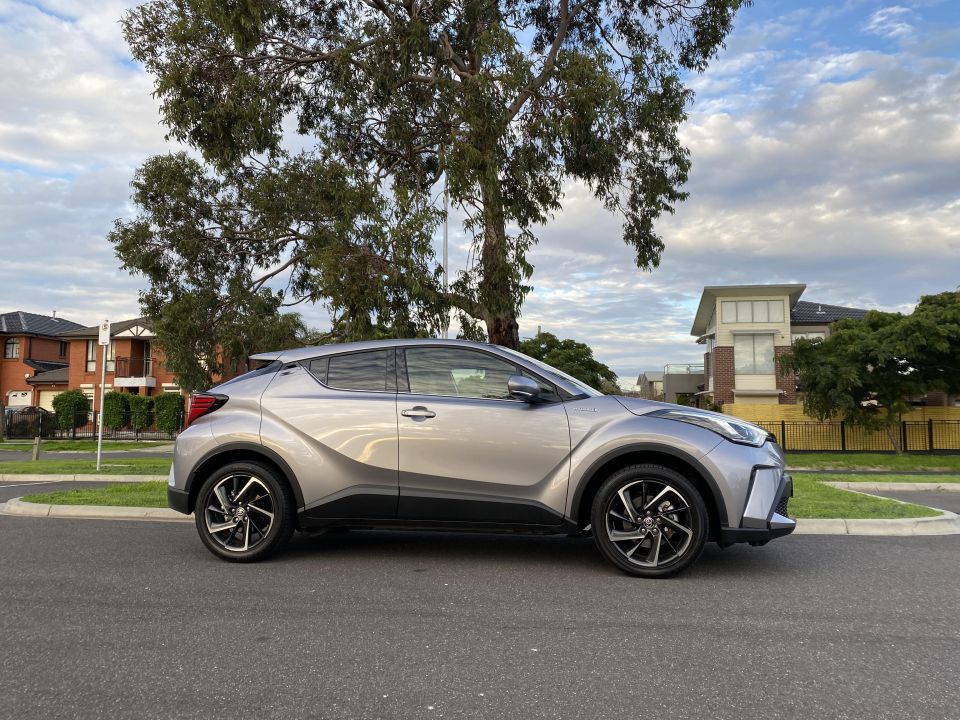
But it’s bold in the looks department, well finished inside, has most of the safety boxes ticked, is fuel efficient as heck, and retains the 1.2-litre model’s class-leading ride comfort and agility.
Toyota’s mission was to make a Coupe-High Rider, and this achieves that. Whether the necessary trade-offs make it too compromised for you depends on your needs. Personally I’d go for a Corolla ZR hybrid.
Where expert car reviews meet expert car buying – CarExpert gives you trusted advice, personalised service and real savings on your next new car.


Andrew Maclean
25 Days Ago


Josh Nevett
22 Days Ago


Matt Campbell
15 Days Ago


William Stopford
13 Days Ago
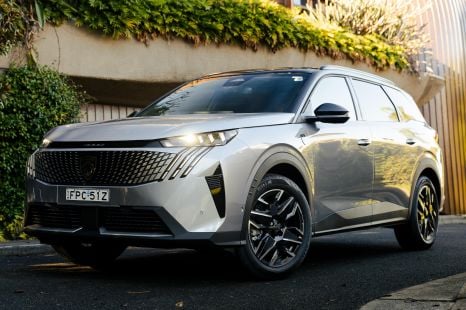

Anthony Crawford
10 Days Ago
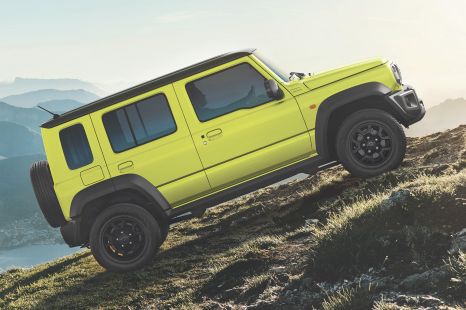

Damion Smy
9 Days Ago